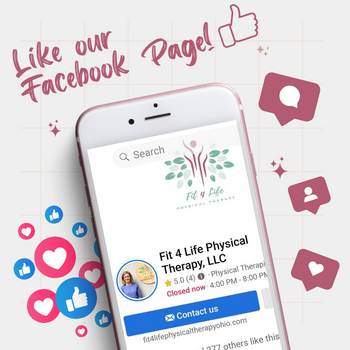HI there friends, this special post is taken from my recent guest blog log entry for Alex Wollschleger Strength and Conditioning.
Hi there friends! My name is Jennifer Nieset. I am a Physical Therapist and owner of Fit 4 Life PT here in Concord Ohio. I am here today to talk to you about Plantar fasciitis and Shin splints: two common issues runners often face. Perhaps you are stuck at home now, unable to get to the gym, forced to lace up your shoes and hit the roads or parks for some miles.
Alex has graciously allowed me to interrupt his regularly scheduled, highly valuable blog post to share some of my own tips and tricks with you all to keep your feet and shins healthy as we head into spring!
Why can I talk to you about this? Well, a few reasons: First, I am a lifetime runner…competing since the age of 7…including a Division 1 College career, extending post collegiately into postpartum running, ultimately achieving a lifetime goal of qualifying for and competing in the Boston Marathon in 2018.
I have also been a PT for over 20 years, with much experience working on myself, my husband, and now four kids, all of whom have run at some point in their lives! My PT practice has always included runners. It was in fact, A PT who helped me overcome a HS injury, that led to my own career path. So let’s chat.
Plantar fasciitis: one of the most common causes of heel / arch pain; it involves inflammation of a thick band of tissue that runs across the bottom of your foot and connects your heel bone to your toes (plantar fascia). Plantar fasciitis commonly causes stabbing pain with your first steps in the morning. As you get up and move, the pain normally decreases, but it might return after long periods of standing or when you stand up after sitting. Plantar fasciitis can occur in people with flat feet or high arches. One of the most common causes of plantar fasciitis is overuse/ repetitive exertion with inadequately supportive shoes.
Most cases improve with conservative treatments, including resting, icing the painful area and stretching, in several months. – I personally have not seen improvement / added benefit from rest vs continued activity and try to keep people moving with good footwear and a stretching program.
Shin splints:; refers to pain along the shin bone (tibia) — the large bone in the front of your lower leg. Shin splints are common in runners, dancers and military recruits. Also known as medial tibial stress syndrome, shin splints often occur in athletes who have recently intensified or changed their training routines. The increased activity overworks the muscles, tendons and bone tissue.
If you have shin splints, you might notice tenderness, soreness or pain along the inner side of your shinbone and mild swelling in your lower leg. At first, the pain might stop when you stop exercising. Eventually, however, the pain can be continuous and might progress to a stress reaction or stress fracture.
You’re more at risk of shin splints if: 1. You’re a runner, especially one beginning a running program 2. You suddenly increase the duration, frequency or intensity of exercise 3. You run on uneven terrain, such as hills, or hard surfaces, such as concrete 4. You’re in military training 5. You have flat feet or high arches.
SO let’s talk! Here are My Top 10 Tips to keep your feet and shins healthy! See below for images and instructions for specific exercises. For more examples of core and hip strengthening good for runners, please visit our YouTube Channel.
- Have your foot posture assessed to make sure you are in the right shoe. The local running stores can help, or your local Physical Therapist.
- Don’t increase your intensity and duration too much, especially at the same time. Newer runners, shoot for 2-3 runs a week, 1-4 miles. If one of those is a “longer run” , add a mile to it once you are feeling comfortable
- Look for softer surfaces to run on: trail running, grass, pavement, treadmill over concrete
- Stretch and foam roll your calves and feet
- Work on short foot exercises and toe yoga for those of you with flat feet
- Strengthen the front of the lower leg in order to balance strong calves
- Runners need a strong core so make this a priority, think plank, glutes, gluteus medius (side of the hip) and hip rotators (piriformis).
- Single leg strength is KEY for all runners so challenge your single leg balance regularly.
- Have your alignment checked…your body is a machine, treat it like one!
- If you are having pain, listen to your body. Get to a Physical Therapist who can do a full body diagnostic and come up with a plan to help you overcome pain and injury and run pain free.
If you have any questions about this, or other running / physical therapy advice, feel free to send me a message.






Happy and Safe Running!







Awesome article.